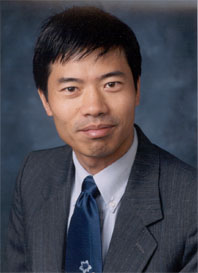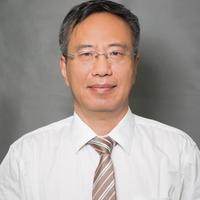
Prof. MengChu Zhou
Title: Replacing Particles in Particle Swarm Optimizers with Mobile Robots: A Novel Paradigm for Effective Swarm Optimization
Bio:
MengChu Zhou received his B.S. degree in Control Engineering from Nanjing University of Science and Technology, Nanjing, China in 1983, M.S. degree in Automatic Control from Beijing Institute of Technology, Beijing, China in 1986, and Ph. D. degree in Computer and Systems Engineering from Rensselaer Polytechnic Institute, Troy, NY in 1990. He joined New Jersey Institute of Technology (NJIT), Newark, NJ in 1990, and is now Distinguished Professor in Electrical and Computer Engineering. His research interests are in intelligent robotics and automation, Petri nets, Internet of Things, big data, web services, and intelligent optimization. He has over 800 publications including 12 books, 500+ journal papers (400+ in IEEE transactions), 26 patents and 29 book-chapters. He is the founding Editor of IEEE Press Book Series on Systems Science and Engineering, Editor-in-Chief of IEEE/CAA Journal of Automatica Sinica, and Associate Editor of IEEE Internet of Things Journal, IEEE Transactions on Intelligent Transportation Systems, and IEEE Transactions on Systems, Man, and Cybernetics: Systems. He is a recipient of Humboldt Research Award for US Senior Scientists from Alexander von Humboldt Foundation, Franklin V. Taylor Memorial Award and the Norbert Wiener Award from IEEE Systems, Man and Cybernetics Society, and Excellence in Research Prize and Medal from NJIT. He has been among most highly cited scholars for years and ranked top one in the field of engineering worldwide in 2012 by Web of Science. He is a life member of Chinese Association for Science and Technology-USA and served as its President in 1999. He is a Fellow of IEEE, International Federation of Automatic Control (IFAC), American Association for the Advancement of Science (AAAS) and Chinese Association of Automation (CAA).
Abstract:
A Particle Swarm Optimizer (PSO) and mobile robot swarm are two widely studied subjects. Many applications emerge separately while the similarity between them is rarely explored. When a solution space is a certain region in reality, a robot swarm can replace a particle swarm to explore the optimal solution by performing PSO. In this way, a mobile robot swarm should be able to efficiently explore an area just like a particle swarm and uninterruptedly work even under the shortage of robots or in the case of unexpected failure of robots. Furthermore, the moving distances of robots are highly constrained because energy and time of robots can be costly. Inspired by such requirements, this presentation discusses a Moving-distance-minimized PSO for a mobile robot swarm to minimize the total moving distance of its robots while performing optimization. The distances between the current robot positions and the particle ones in the next generation are utilized to derive paths for robots such that the total distance that robots move is minimized, hence minimizing the energy and time for a robot swarm to locate the optima. Experimental results on optimizing 28 CEC2013 benchmark functions show the advantage of the proposed method over the standard PSO. By adopting it, the moving distance of robots can be reduced by more than 41% while offering the same optimization effects. The implication is enormous since all population-based optimization algorithms can be potentially benefited from such replacement of their individuals with mobile robots, thus leading to their moving-distance-minimized variants.
 Prof. Xizhao Wang
Prof. Xizhao Wang
Title: Uncertainty Modeling in Adversarial Learning
Bio:
Xi-Zhao Wang received his PhD degree from Harbin Institute of Technology in 1998, worked as a research fellow in Hong Kong Polytechnic University from 1998-2001, and served in Hebei University as a professor and the dean of school of Computer Sciences from 2001-2014. After 2014 Prof. Wang worked as a director and a professor in Big Data Institute of ShenZhen University. Prof. Wang’s major research interests include uncertainty modeling machine learning, and big data analysis. Prof. Wang has edited 10+ special issues and published 3 monographs, 2 textbooks, and 200+ peer-reviewed research papers. As a Principle Investigator (PI) or co-PI, Prof. Wang’s has completed 30+ research projects. Prof. Wang has supervised more than 150 Mphil and PhD students. Prof. Wang is a CAAI Fellow, an IEEE Fellow, the previous BoG member of IEEE SMC society, the chair of IEEE SMC Technical Committee on Computational Intelligence, the Chief Editor of Springer Journal – Machine Learning and Cybernetics, and associate editors for a couple of journals in the related areas. Prof. Wang was the recipient of the IEEE SMCS Outstanding Contribution Award in 2004, the recipient of IEEE SMCS Best Associate Editor Award in 2006, and the recipient of the 1st grade award of the 8th Wu Wenjun Artificial Intelligence Natural Science in 2018. Prof. Wang was a distinguished lecturer of the IEEE SMCS.
Abstract:
Adversarial robustness refers to the ability of a model to resist adversarial samples while adversarial training is a general approach to improving the adversarial robustness of the model. Adversarial training will lead to a reduction of accuracy of the model on clean samples, which focuses usually on the generation of adversarial samples and their impact on model sensitivity. In this talk, we study this issue from a new viewpoint, i.e., the relationship between output uncertainty and adversarial robustness, including the following three parts. (1) It is found that the adversarial robustness of a model is increasing with the growth of output uncertainty, which suggests to improve the adversarial robustness by increasing the uncertainty. (2) The mechanism of regular adversarial training is to minimize the cross-entropy, which may lead to the predictive field of some classes very narrow, and therefore, makes these classes vulnerable to adversarial attacks. Our new training scheme is to maximize the uncertainty of model output while keeping the training accuracy, which implies a balance of distances between the classification surface and multiple classes. (3) The new training scheme, which has been experimentally validated on many artificial and real-world datasets, can also be combined with existing adversarial training to further improve the model adversarial robustness.

